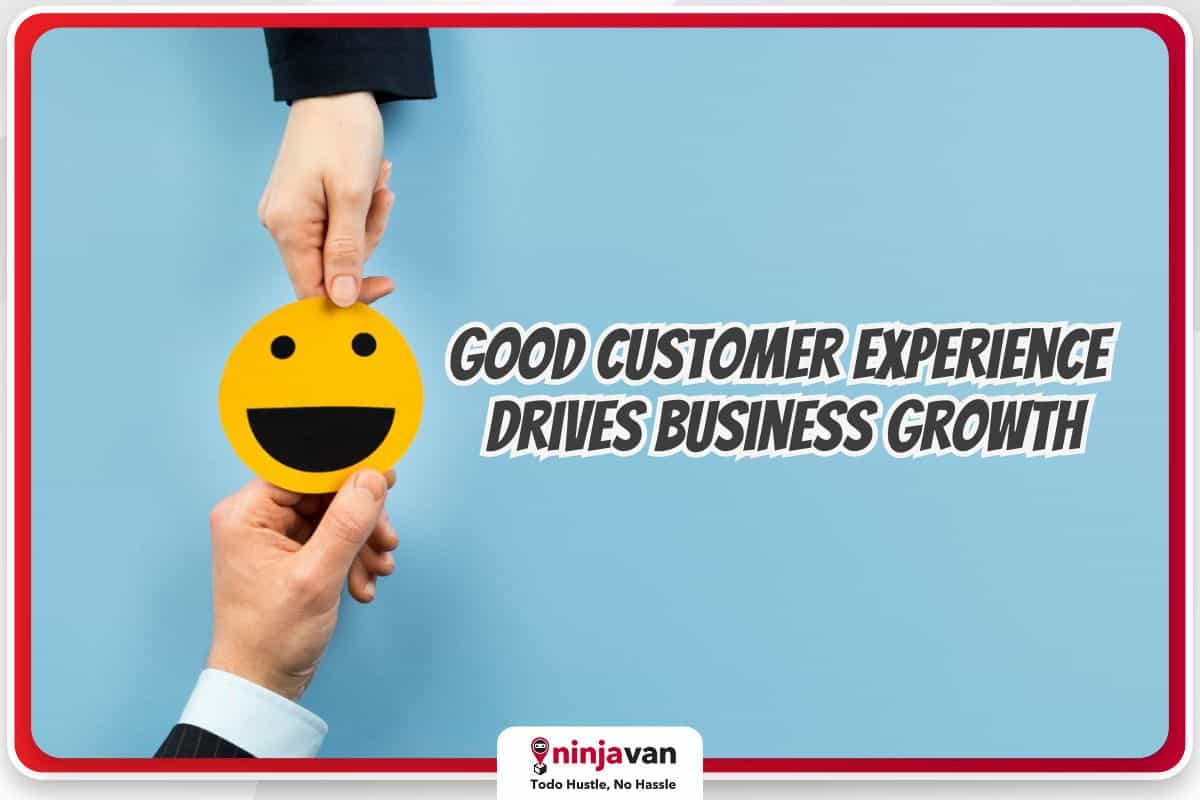Can you still imagine living in an age without social media? While it has become a way to connect with friends and family, or a vital instrument for information dissemination, the influence of social media is even more evident in the world of marketing and ecommerce.
Modern businesses, big and small, have realized its true potential and are always aggressively looking for innovative ways to strengthen their social media marketing strategy and online presence.
With almost 85 million active social media users in the Philippines, it’s easy to see why social media promotion is one of the most effective digital marketing strategies.
Still, social media advertising and marketing may seem complicated to newbie ecommerce sellers. Especially when there’s more than one platform to manage — Facebook, Instagram, TikTok, YouTube, etc. But once you learn how to use them effectively, the possibilities are endless.
What is social media marketing?

Social media marketing is a type of digital marketing strategy focused on producing engaging content for various social media platforms to advertise a brand’s products and/or services.
It includes many elements like content creation, management, engagement and analytics. It’s generally used for building brand awareness, cultivating brand loyalty, generating leads, boosting sales and increasing customer conversion.
Therefore, having a social media marketing strategy is crucial to any ecommerce business’ success.
Why social media marketing is important in the Philippines

So, what’s so great about social media marketing, and why do businesses in the Philippines have to know about it?
Well, the Philippines is big on social media. With almost 85 million active social media users, that’s about 73% of the entire population, it’s easy to see why social media promotion is one of the most effective digital marketing strategies.
Not only that, in a 2023 white paper published by Ninja Van (The Future of E-Commerce in SEA), we found out that 86% of Pinoy e-shopaholics buy directly from social media, of which 53% buy from brands they already follow.
But the sheer size of the audience isn’t the only reason that makes social media marketing effective for businesses.
The Pros
Cost-effective
They say success comes with a price. But exactly how much? Can small ecommerce sellers afford it?

Thankfully, it’s not that out of reach. Social media marketing has a relatively lower operating cost than other traditional marketing strategies.
FREE ADS: With little to no budget at all, you can implement your very own social media advertising strategy by creating self-promotional posts, sharing your content in social media groups or getting your followers to share your posts.
PAID ADS: Paid social media advertising is affordable, even for smaller ecommerce business owners! Take Facebook ads for example. You can either choose the Cost-per-click (CPC) method, the Cost per Result (CPR) method, or the Cost-per-post engagement (CPPE) method.
Here’s our Easy Guide to Starting Your Facebook Ads.
#NinjaTip: Facebook’s marketing partner Adespresso has a handy Ads Cost Calculator that can help you estimate the cost of your next Facebook ad campaign.
Provides better customer experience

With robust social media promotion, you can reach out to both your existing and potential customers. You can engage them in a more personal and relatable way to help them with their concerns.
Likewise, many customers — satisfied and unsatisfied alike — air their feedback on social media. Using that very same channel, you can respond directly and let them know that you’re listening. Through this, you are building relationship with your customers.
Here are some tips on the Best Ways to Respond to Negative Customer Reviews.
Cultivates brand loyalty

In line with providing a better customer experience, you can also cultivate brand loyalty through your social media marketing strategy. Regular interactions can make customers feel your brand is genuinely concerned about their experience.
This builds genuine relationship created through trust and, over time, builds brand loyalty.
Read more about Why Building Customer Relationships is Important to your Business.
Creates a wider brand awareness

People on social media love sharing things that pique their interests or an experience that they enjoyed, including their recent purchases. More importantly, they love interesting, touching or funny content and would willingly spread it online.
You can take advantage of this love for sharing by producing content that are trendy, informative, shareable, and, if possible, humorous. These kinds of content have the potential to go viral, helping your business reach a wider audience.
Increases ecommerce website traffic
Social media marketing, when used effectively and efficiently, can increase your ecommerce website’s traffic. Your posts and ads can only say so much. Therefore, your ads should send the customers to a page on your website where there are more information about your products.
You can do this by including a Call-To-Action (CTA) and linking your social media posts/advertisements to your ecommerce website. This will not only drive traffic to your site, it’s also the next step to converting the users into customers.
So make sure your landing page is as effective as your post that attracted them in the first place.
The Cons
There’s always risk of negative publicity
Using social media is like walking on eggshells.

One bad review from a customer can easily damage your business. As powerful and as advantageous social media is, it is a double-edged sword. That’s why it’s so important to be careful about posting content prone to misinterpretation. Or better yet, don’t do it.
Always be mindful of how your post will reflect on your business. Create intrigue without being controversial, and avoid touching on sensitive social or political topics. You’re here to market your business, not attract unwanted attention.
It can be time-consuming

Creating high-quality organic content takes a lot of time and research. Additionally, being consistently relevant and creating interesting content all the time can be quite demanding of your time and effort.
Thankfully, we have a list of tools that can help you speed up social media post creation!
Long-term investment needed

Social media marketing is not a “one-time, big-time” affair. You’ll need a long-term commitment to consistently provide your audience with strong content. You’ll also need to test your ads with your audiences, see which works and which doesn’t.
Patience and hard work will soon pay off, and you’ll see positive results from your social media marketing campaign.
10 step-by-step guide to social media marketing

Step 1: Set your business goals
Before anything else, write down your business goals. Ask yourself these questions:
- What do you want to achieve through your social media marketing?
- Who is your target demographic?
- What are your short-term goals?
- What are your long-term goals?
- How do you intend to use the social media platform to reach those goals?
Step 2: Strategize and establish your brand voice
After figuring out the answers to the questions above, start plotting your social media marketing strategy. In developing and executing this strategy, you need to keep in mind your target audience, your marketing goals and the brand image you want to project.
You’ll need to decide whether you prefer to hire a social media team/social media manager or if you want to take on this task yourself. Since social media marketing is sometimes done by more than one person or by a team, it’s important to establish first what kind of brand voice you’d want to have.

Whatever your brand voice, you stick to it. This will make your marketing campaign stronger and more coherent over time.
Step 3: Create a content calendar
Planning makes everything easier and decreases the risk of your calendar falling through due to unforeseen emergencies. Developing a regular content calendar will keep your posts consistent and more organized.
To do this, schedule your posts at least one week ahead. Be it new product launches, special offers, photos or simple ad posts, make sure you know the time when most people of your target demographics are online.
Also, recency is the backbone of relevancy. For example, if your ecommerce niche is sports attire, it’s best to post sports-related content (scores, controversies, or even player injuries) just after the big game.

so your followers can always expect new things from you.
Step 4: Look out for trends
We’re not saying you’ll post lots of memes or TikTok videos so you’ll look trendy. Of course, those tactics will work if they fit your audience profile. But more than that, be on the lookout for what people are currently talking about.
This will help you create content that will resonate with the time, and easily catch everyone’s attention.
But make sure people can relate it to your business. And avoid controversial or highly polarizing topics; you may end up losing some customers because of them.
Angkas is one of the brands that do this well. As a result, their witty and funny posts never fail to get our attention.

Step 5: Do quality checks
Always strive to produce high-quality content. If you focus on quantity over quality, then you’re not doing your ecommerce business a favor.
High-quality posts are far more effective than bulk content that are neither interesting nor relevant. In fact, users start losing interest in a post after 8 seconds. If you fail to catch their attention within that time frame, customer conversion will be unlikely.

Likewise, check the status of your social media engagement campaign. Make sure that you or your social media team deals with your customers in a professional yet approachable manner. Having a patient and understanding mindset when dealing with your customer’s complaints and concerns is essential.
Step 6: Stay updated on the latest social media marketing techniques
Indeed, the marketing world is ever-evolving. What works today may not work tomorrow. Likewise, social media changes constantly. That’s why it’s important to stay up-to-date with the current trends of business marketing.

Google is your best friend. You can search for new techniques or algorithm updates for social media marketing, and try to incorporate them into your current campaign.
Another effective way is checking popular posts on TikTok. Simply browse the platform and see what’s trending now and which content performs well for social media audiences. Learn to incorporate the trends into your content to engage your target customers and without losing your voice.
#NinjaTip: subscribe to the Ninja Van blog to get the latest social media tips and other guides for growing your ecommerce business.
Step 7: Build relationships
After attracting as many users to your social media, the next step is to nurture them, guide them into knowing your business better and help them finally make a purchase.
The unique benefit of social media is it allows you to talk directly to your customers and followers. From there, you can build relationships over time, instead of asking them to buy upfront. When you establish trust, they will not only enjoy their experience with your brand, you will have loyal customers who will champion your brand online.
So, engage with your followers, talk to them and show them how your products can answer their needs.

Step 8: Work with influencers
Partnering with influencers is an effective social media marketing strategy. It enables businesses them to leverage the trusted relationships and expansive reach of these content creators to reach and engage their own target audience.
Influencer marketing also foster authenticity as customers often trust their recommendations over more traditional ads.
You don’t need to spend a fortune either! There are micro and nano influencers that you can tap that have a more niche following, and can bring you the same effective results.
Step 9: Monitor your performance
The key to winning on social media is to understand analytics. Regularly track and analyze your social media performance using tools like Google Analytics or social media insights to refine your strategy.

Understand your customer’s behavior, how they engage with you (and your competitors) and how they’re spending their money. And finally, what content works best in engaging them and enticing them to buy from you.
Learn about the Social Media Metrics You Should Be Monitoring.
Step 10: Create promotions and contests to reach more audiences
Running social media promotions in the form of contests and giveaways can be a good strategy for several reasons. They help increase your brand’ visibility to a wider audience and increases engagement in the form of likes, comments, shares, and clicks.
Here are more benefits to running social media promotions:
- Effective lead generation tool
- Boosting sales and conversions
- Data collection on audience behavior and preferences
- Building customer loyalty
- Opportunity to test different strategies and offers
How to run a successful social media promotion or contest
Now, running a social media promotion or contest can’t be that hard, right? It seems simple enough — have up some goodies to give away, boost a few posts to gather participants, and then wait for that sweet engagement to roll in, hopefully followed by busloads of customers.

Unfortunately, it isn’t that simple. So here’s some extra tips on running an effective social media contest or giveaway.
1. Set a goal
Having a defined goal for your social media contest allows you to focus all your efforts in one direction. To do this, you need to ask yourself the basic question: Why are you running a contest in the first place?
Is it to boost brand awareness? Drive engagement? Promote a new product? All of these are viable goals for your contest to achieve.
2. Set a budget
As fun as social media contests can be, you still need to justify the financial cost to your business. When setting your budget, make sure to include the costs of your giveaways, advertising, and logistics. Having a solid budget in place gives you the best chance of making your investment back and then some.
3. Choose the prizes well
No one will go through the hassle of joining a contest if the prize isn’t worth it, so you need to make sure the reward is attractive and proportionate to the effort people have to put in.
More than that, your prize needs to be relevant to your brand. It’s no use having a giveaway that doesn’t market your product or service. It pays to have a prize that puts your brand’s best foot forward, converting participants into customers.
4. Choose the right social media platform
The best social media platform to run your contest on will depend on your audience, industry and niche. If you aren’t sure which platform to use, don’t be afraid to experiment – after a few contests, you’ll have a better idea of which one maximizes your reach.
The unique benefit of social media is it allows you to talk directly to your customers and followers… (and) build relationships over time, instead of asking them to buy upfront.
5. Structure your contest
The next step is to structure your social media contest. You need to decide on a timeline, eligibility, number of winners and type of contest. Types include photo, video, caption, sweepstakes, like/share/reply, and voting contests.
Use the goal you determined to guide this process. If you want more people to purchase your product, you can have a photo contest with your product in the picture, but if you want more people to know more about your website or social media accounts, like/share/reply contest would do.
6. Launch, promote and engage
If you want to maximize the reach of your social media contest, you need to make sure your marketing materials are exciting, brief, straightforward and actionable.
People who participate in your contest are already interested in your brand, so your next step is to engage with them to convert them from entrants into customers.
7. Do a post-contest analysis
Once you’ve chosen your winners and dispatched your prizes it’s time to analyze your data from the contest to see how successful you were in achieving your goals. You should ask important questions such as:
- Was enough buzz generated?
- Did you attract the right audience?
- Did you achieve ROI? and
- Was your choice of social media platform effective?
Take your time on this step, as a comprehensive post-contest report will help you create more effective giveaways in the future.

SOCIAL MEDIA MARKETING is not just about posting or running ads. You have a lot to learn to get the desired results. You can even combine different marketing techniques – like relationship marketing and influencer marketing – to maximize the results of your social media marketing strategy.
Remember to test, test and test again to get your best results!
But wait, before you go! We have more social media articles to help your online hustle:
Designing Your Brand for Social Media
5 Tips on How to Run Successful TikTok Ads
How Social Media is Changing Online Shopping






